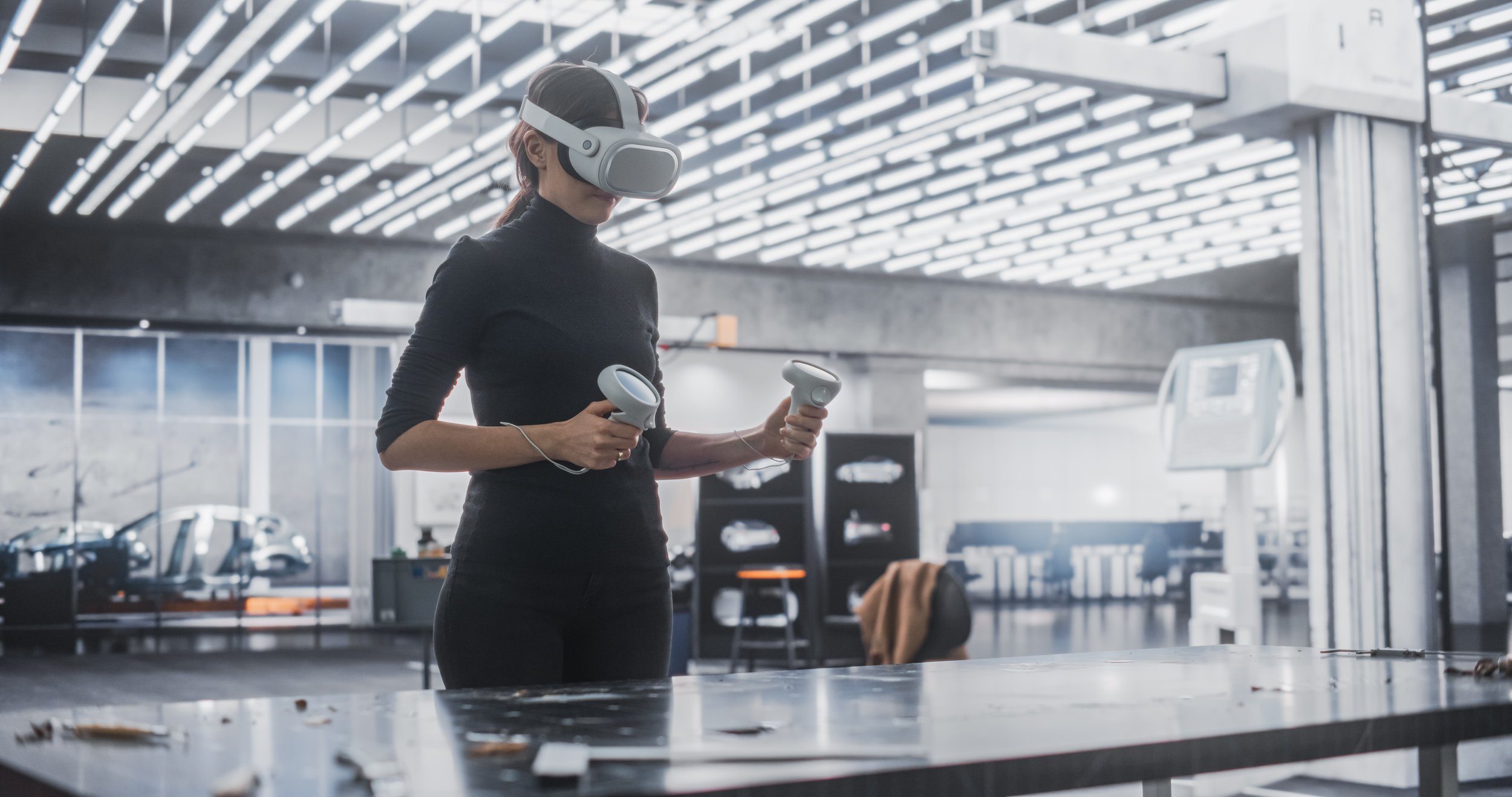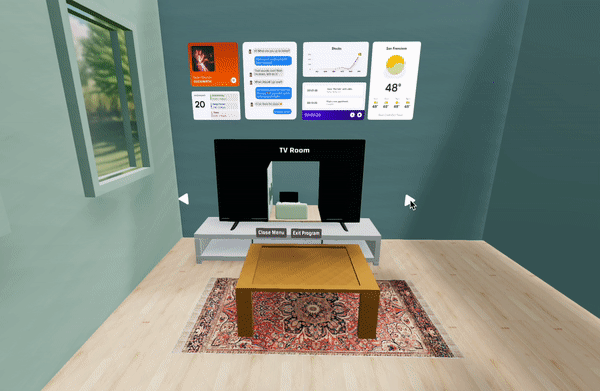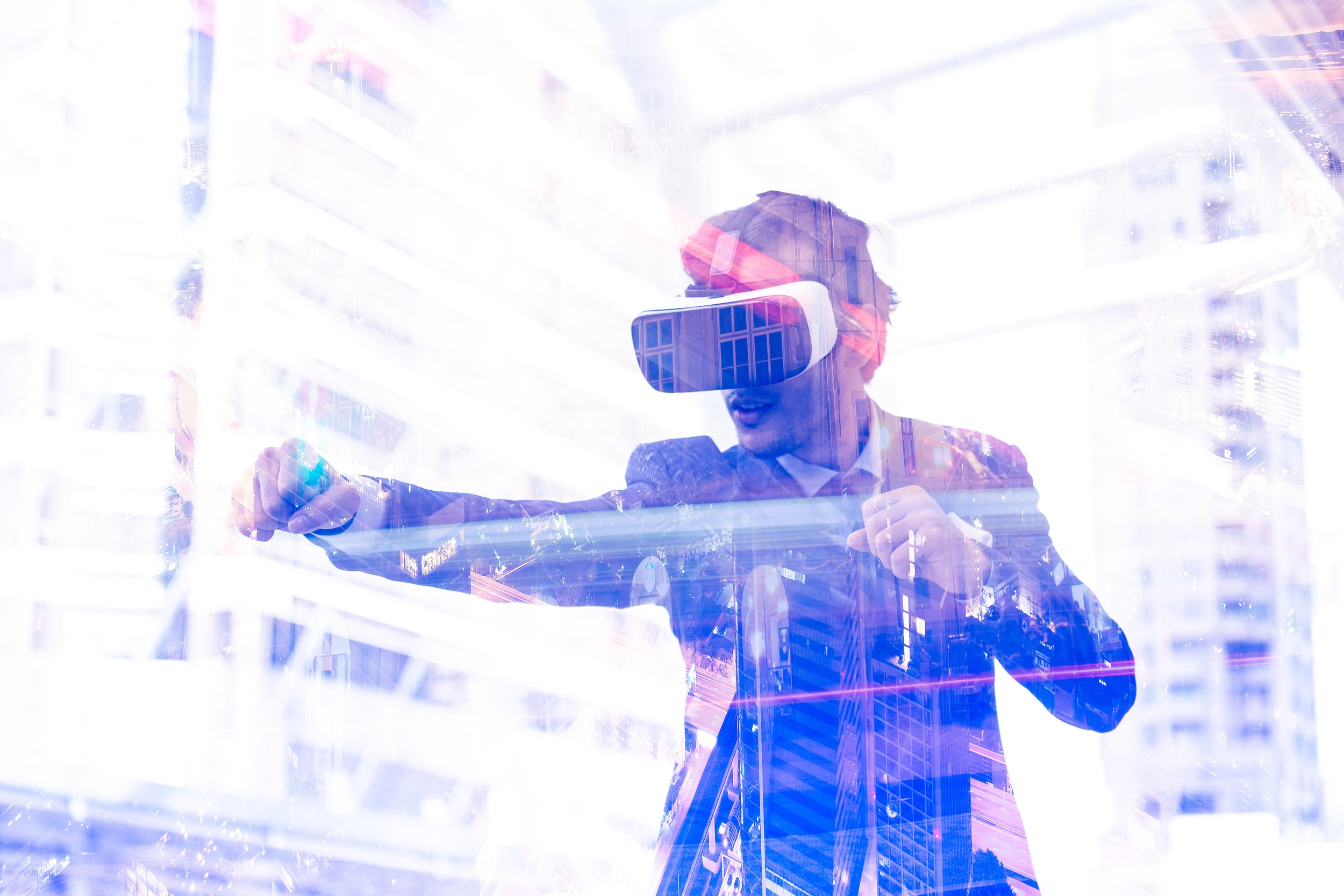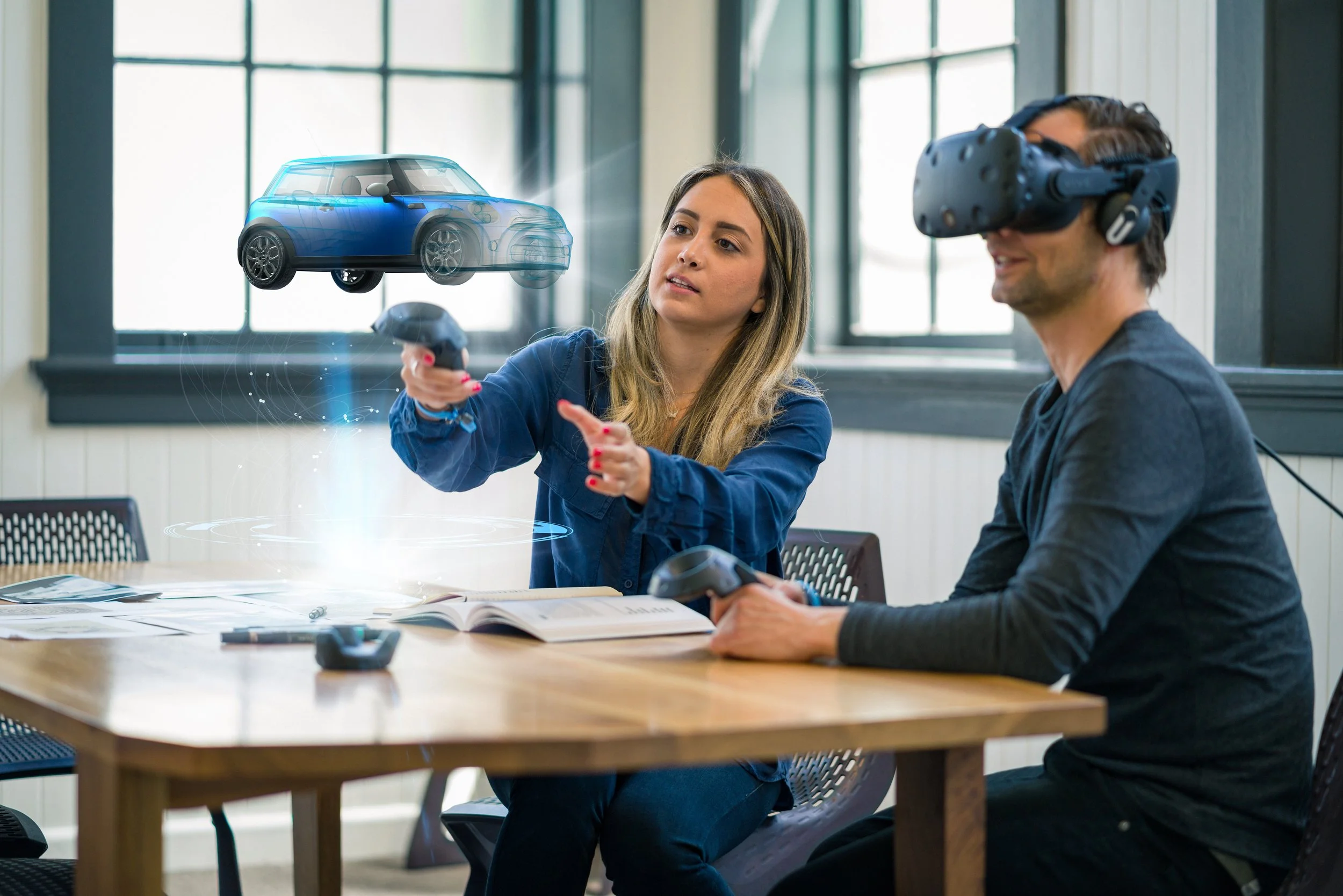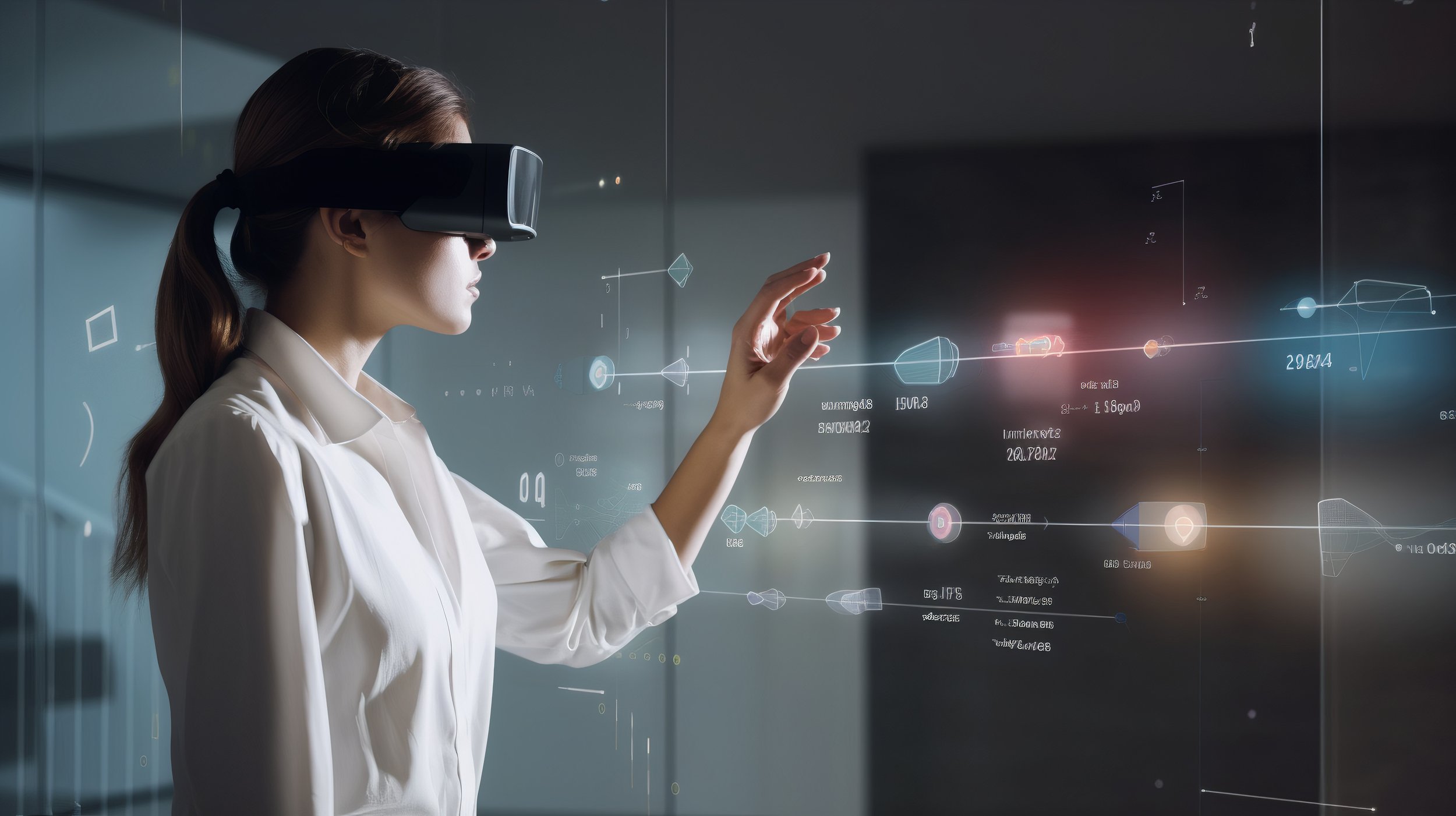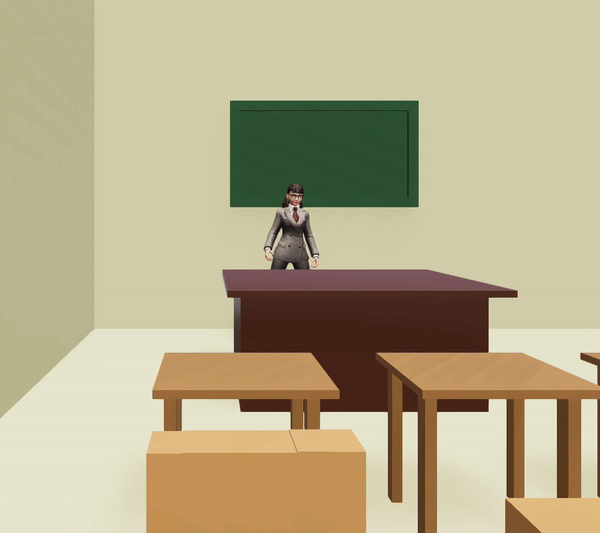Punchcut
Project Overview
Timeline 3 months
Role XR designer, XR prototyper
Tools Figma, Cinema 4D, Bezi, Sketchfab, Metaquest Pro
How might we help XR designers improve their design workflow while they are in an extended reality environment?
At Punchcut, I explored ways to help designers at the agency improve their design workflow while they work in extended reality. In this process, I was able to create a low code XR prototype to demonstrate proof of concept and pitched the idea to leadership.
PROBLEM
There is no standard workflow for environment switching in XR
Currently, there is no standardized workflow for XR design and prototyping that allows designers to see their work in different scenarios.
SOLUTION
A design workflow that helps make context switching easier
I designed a prototype that can help XR designers switch between different environment contexts.
RESEARCH
I surveyed 6 designers at Punchcut in various departments
I designed a survey that combined multiple choice and open ended questions to quickly identify employee roles while providing enough space to explain past projects. I created interpretation notes based on survey responses and synthesized the data to inform 3 key insights.
01
Make it easy
Designers want to avoid technical difficulties such as building assets from scratch and bringing them to different software. They want to save time on building the prototype so they can focus on designing core interactions.
02
Make it customizable
Designers want the ability to modify their designs easily so they can be tailored to different scenarios of the target user, the person they are designing for.
03
Make it collaborative
Designers want the option to collaborate with other designers and AI tools when building their prototype. We want to create a process that allows interdisciplinary collaboration between different departments.
DESIGN
Based on these insights, I ideated on environments that have practical and common use cases for designers.
TV Room
I designed a space that is private and indoors to consider a smaller space with partial sunlight. 3D models were built in Cinema 4D and Bezi. Additional assets were added from Sketchfab to create a more immersive experience.
Classroom
I designed a space that is public and indoors to consider a larger space with indoor lighting. 3D models were built in Cinema 4D and Bezi. Additional assets were added from Sketchfab to create a more immersive experience.
City Park
I designed a space that is public and outdoors to consider a larger space with natural lighting. 3D models were built in Cinema 4D and Bezi. Additional assets were added from Sketchfab to create a more immersive experience.
INTERACTION DESIGNDesigned flows on a spectrum of diegetic vs. non-diegetic
I used best practices in VR/AR design and UI/UX game principles to ideate on interaction flows. I designed the flows on a spectrum of diegetic versus non-diegetic experiences. I decided to move forward the spatial UI design flow due to its ease of use and clear interface for the designer.
Usability Testing
I conducted multiple rounds of user testing with Punchcut designers. Based on feedback, I made several changes to the prototype, including adding a primary and secondary menu with a clear visual hierarchy and adjusting the menu option so that it is closer to eye level for the designer.
Prototyping Challenges
There were multiple challenges in creating the project. Including keeping track of multiple triggers and states of each object. I also learned to debug and work around technical limitations of the prototyping tool.
IMPACT90% of users can envision this as the future of prototyping
In the post-user test questionnaire, I found that 90% of users could see this being a use case for future prototyping for VR/AR experiences. The project helped leadership gain a better understanding of the tools available today to prototype in XR with low code tools. It also gave them insight in how designers can work in future spaces.


